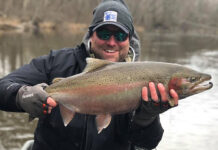The woman’s voice had a slightly bored tone to it as she read the estimate for installing broadband internet service at the farm. My eyebrows rose. Thousands of dollars. Even with the company covering 50% of the cost, still, that left thousands of dollars out of pocket.
Would I like to schedule an appointment for installation? No, I would not, I told her cheerfully, and hung up the phone. With that, I concluded yet another unsuccessful venture into the quest for internet on the farm.
For now, I cobble together internet access, in the hopes that one of the local companies that promised to improve access, through novel approaches, will actually come through.
Real problem
My situation is nowhere near as critical as some. The neighbors across the street appear to have access to broadband. Just not so for those of us on the other side of the street. So, it’s there. More than some can say.
Up until a few years ago, there were dead spots for cell coverage everywhere on our farm. Not so much now. I’ve covered stories in areas in southern Ohio, western Pennsylvania and the northern panhandle of West Virginia where dead zones — in cell phone and data coverage, not to mention broadband internet — are still normal. Small signs sit at the intersection of back roads. “Want fast internet? Call us.”
We jumped into the reporting on our broadband series a few months ago. Sarah, the reporter, dug in, talked with a lot of people and listened to organizations explain the problems. Those problems are complex. Solutions are not easy.
Right now, the Federal Communications Commission coverage maps make it look like large swaths of rural areas have access. Critics don’t agree.
“The FCC just didn’t understand rural areas,” said Dan Manning, with nonprofit Connected Nation. “These carve-outs are really damaging, because it looks like it’s done.”
As anyone in a rural area can tell you, it’s not even close to being done.
Part of life
I don’t love the saturation of the internet into our daily lives, but, as has become my mantra in this column, it’s not going anywhere. Last year, we sold almost all of our ewe lambs as breeding stock, mostly through social media. That’s in large part how we’ve been growing our name recognition as a farm and how we’ve made important connections with other farmers and clients. It is a useful tool.
And here’s the crux of it, in my mind: the question of broadband access is yet another example of the growing gaps between rural and urban populations. In the United States, 97% of the land is considered rural. Yet, only 19% of the population lives there, which is roughly 60 million people. Farmers are an even smaller portion, at around 2 million people. We know these things, but it bears repeating.
Tell the story
We’re told to share our stories, because the divide between people and where their food comes from is growing by the day. The internet is the quickest way to do that, because most of the people who need to hear our stories don’t live next door.
But if we can’t get reliable access, how do we reach them? My hope is that this series is one step further in explaining the problem and identifying possible solutions — because it, too, is part of the farming story.














Very good points, Rebecca. Our farm at the Ashland/Richland County border could hardly pick up a cell phone or even a satellite signal, due to the hills and valleys. Many a day I had to drive to the Mohican Memorial Forest Shrine, up on a hill, in order to talk with folks using my cell phone.
To use a computer, we had to drive into town (Loudonville) and use the Library internet there.